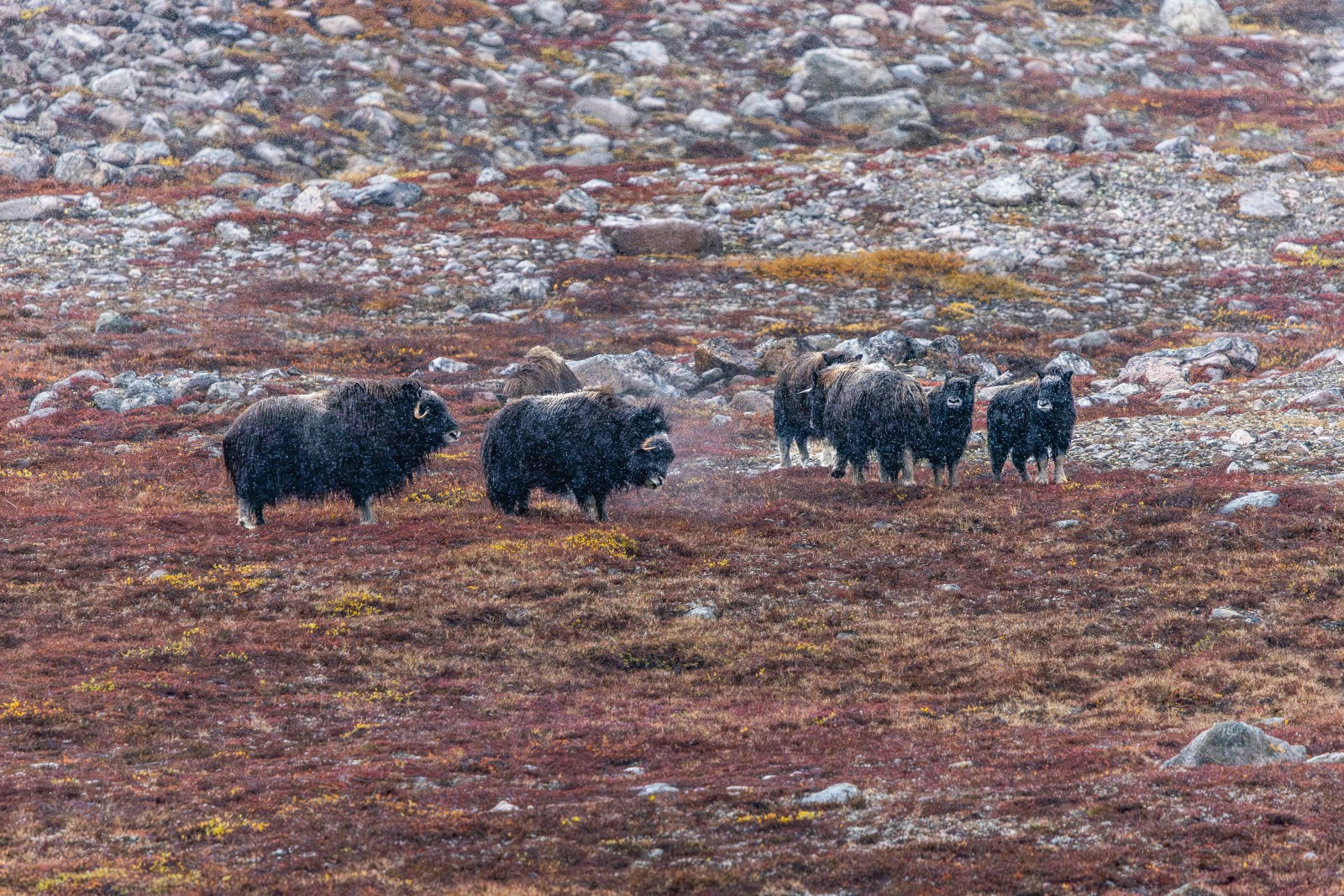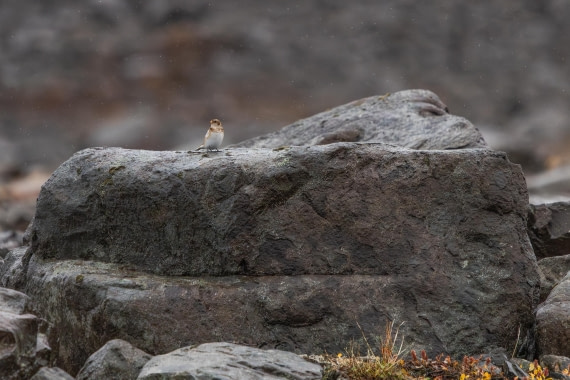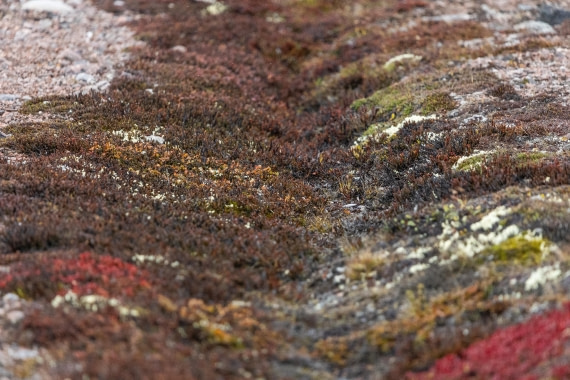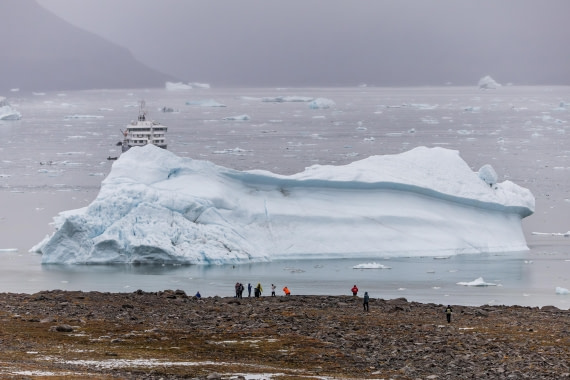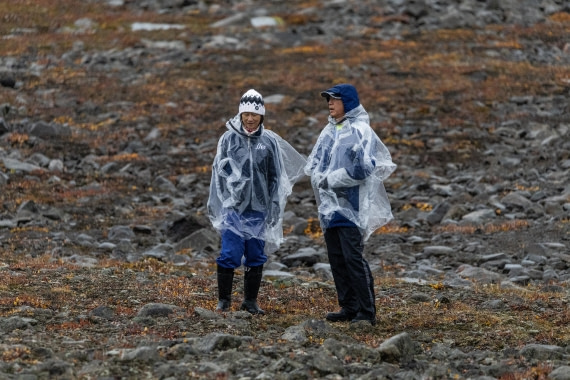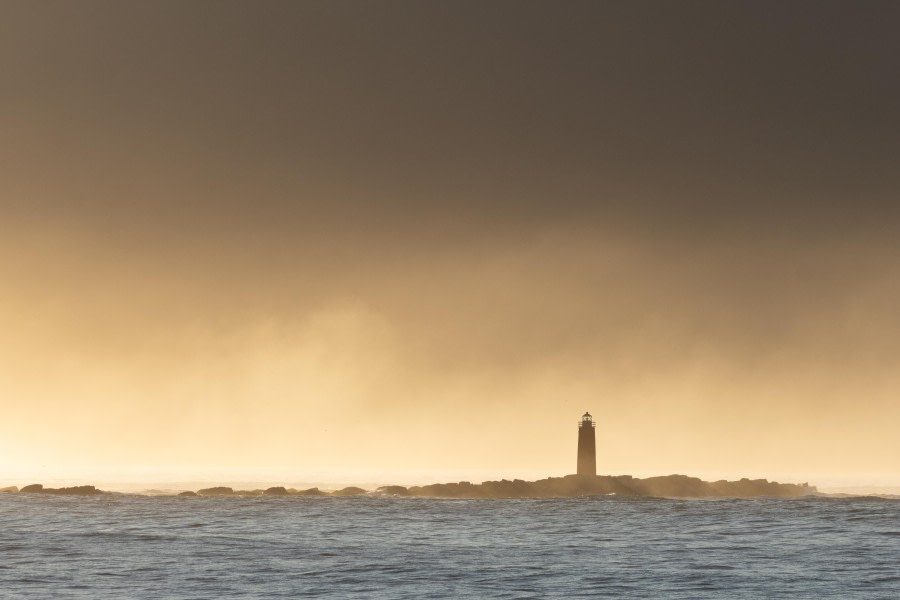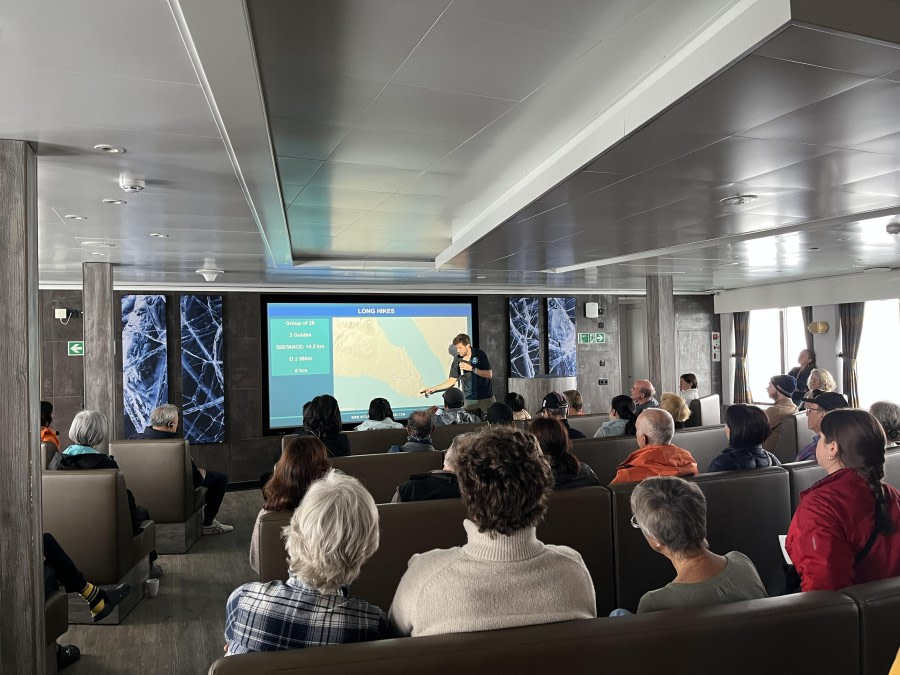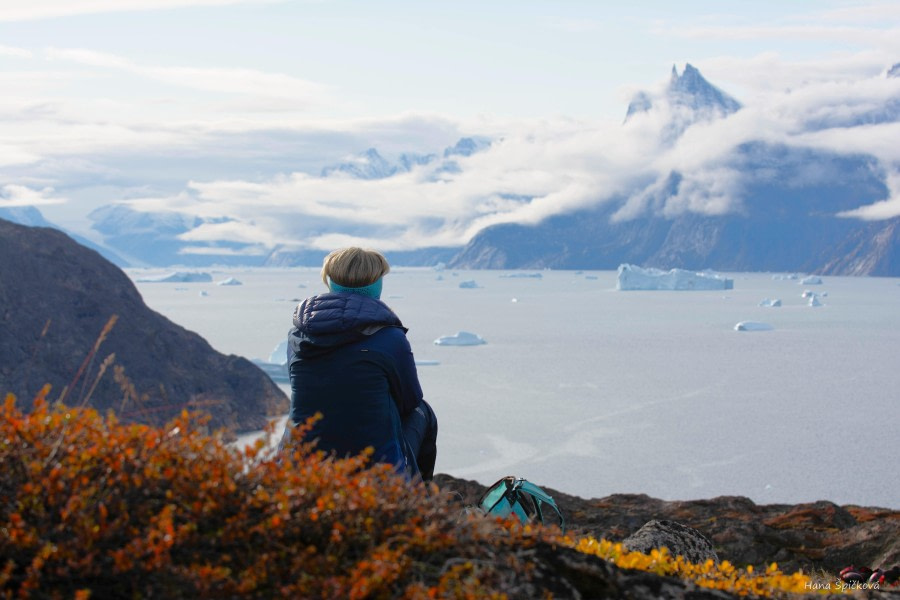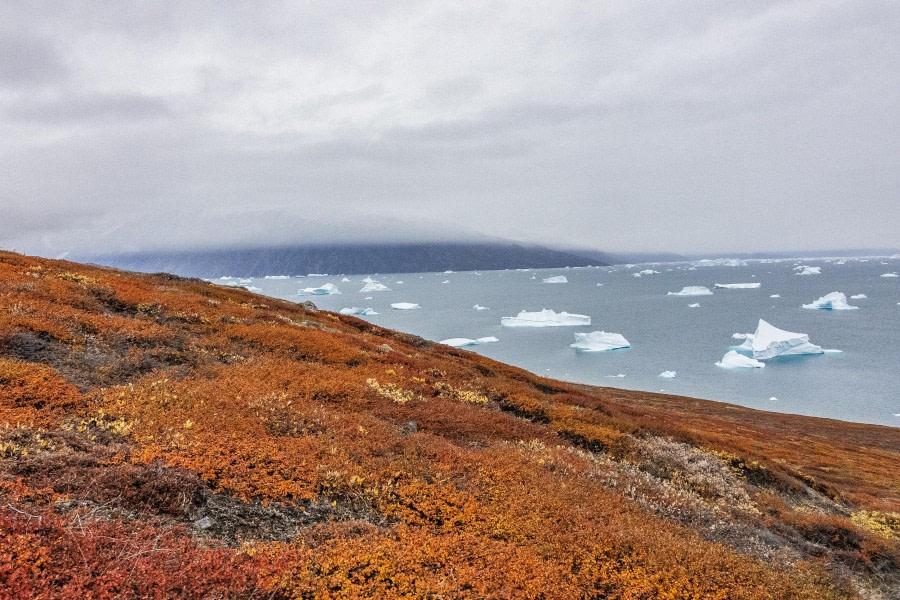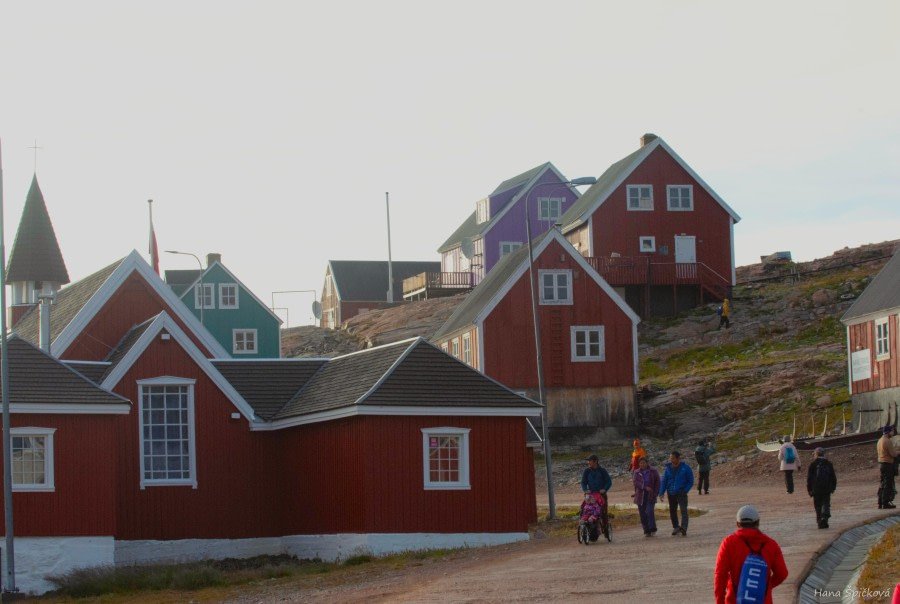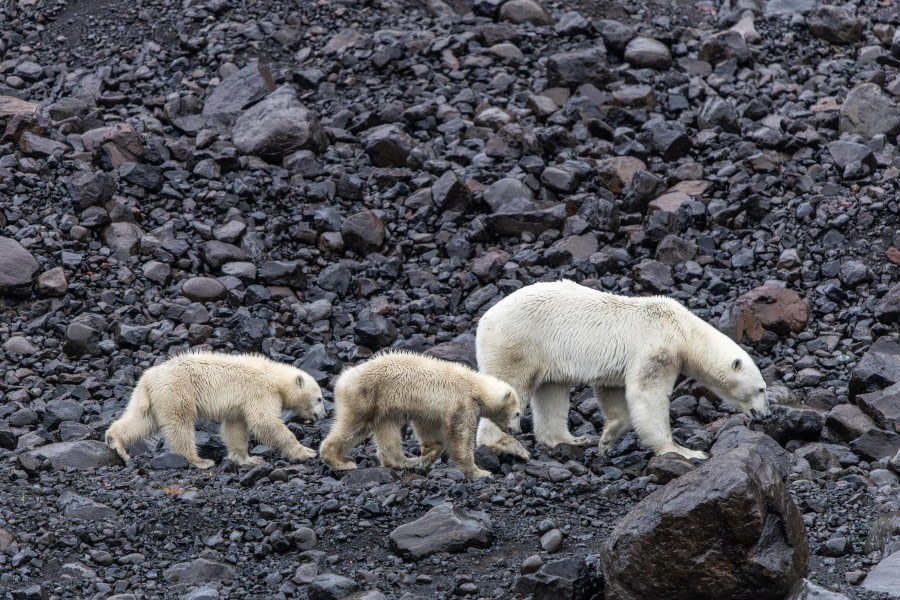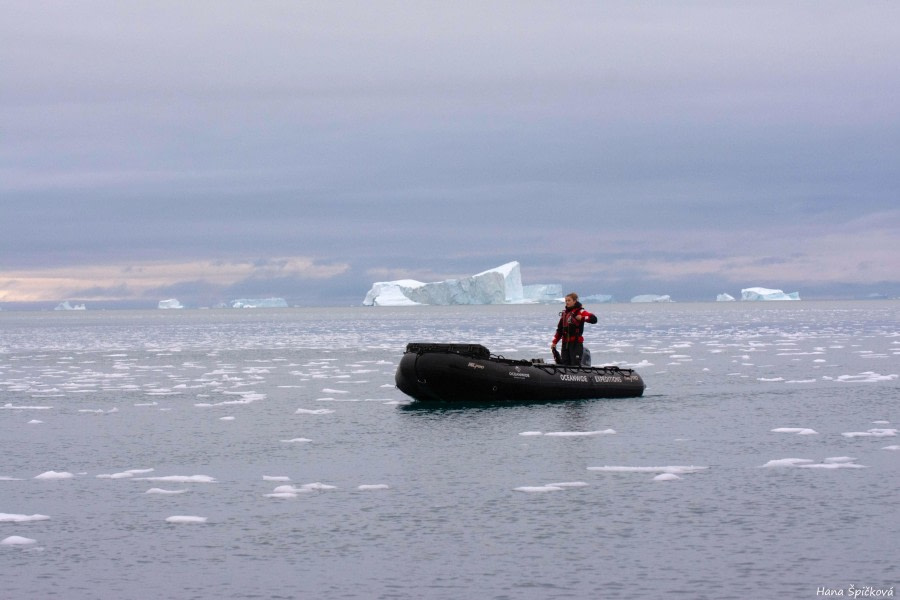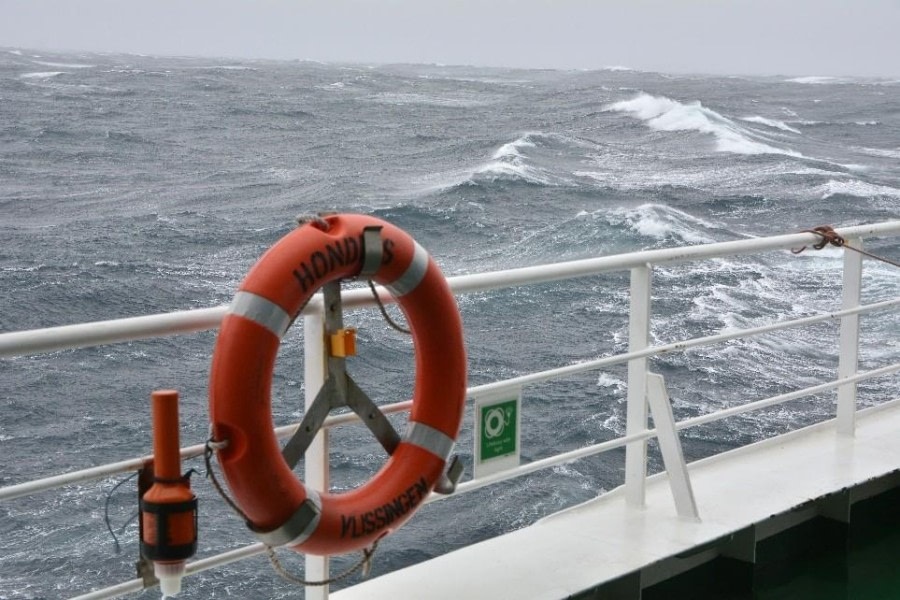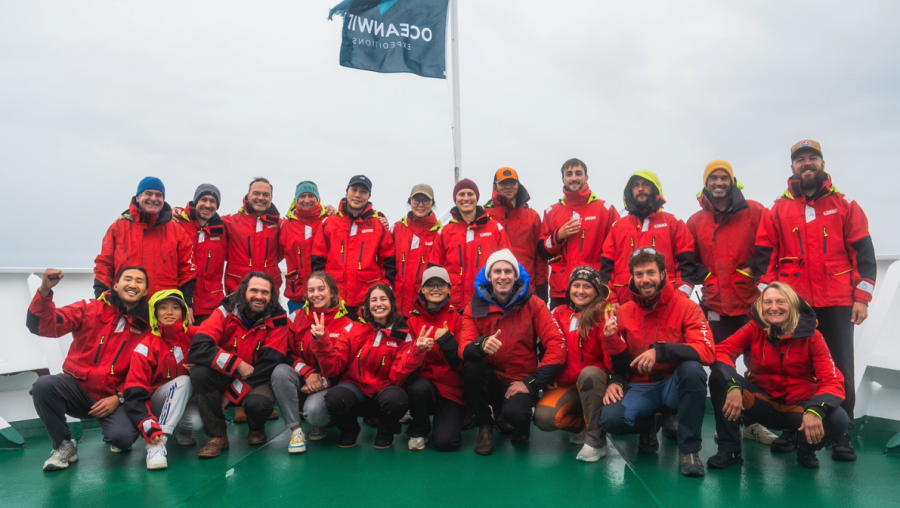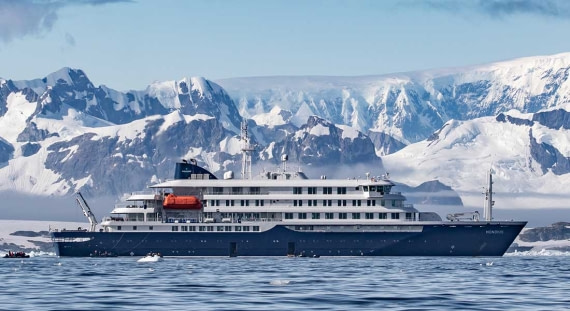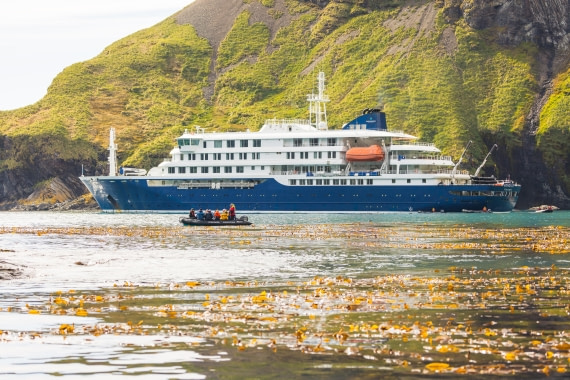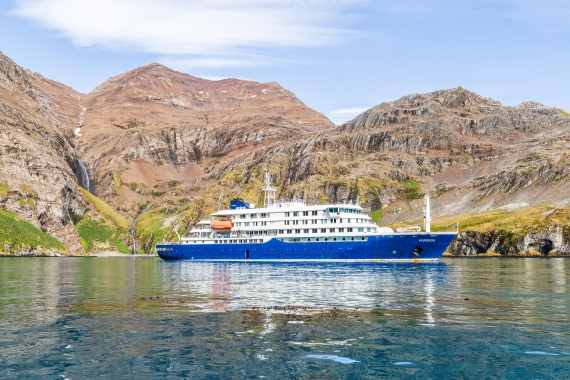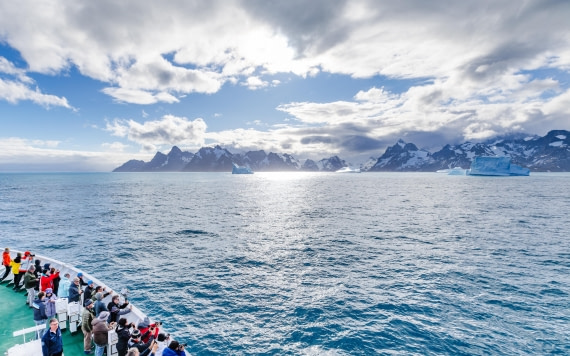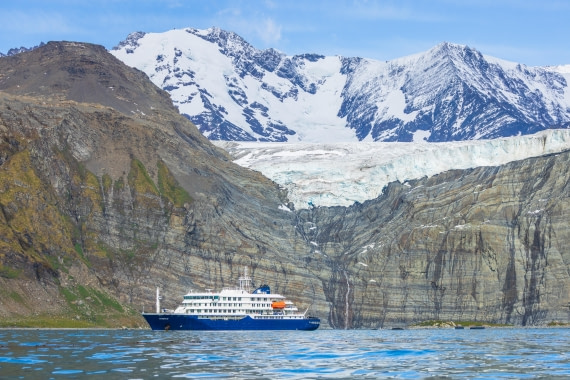| Date: |
08.09.2025 |
| Position: |
70°55.4’N, 027°48.8’W |
| Wind: |
SW-2 |
| Weather: |
Overcast |
| Air Temperature: |
+2 |
We woke at 07:15, roused by the familiar morning call as soft Arctic light filtered through the cabin windows. Outside, the steep cliffs of Harefjord stood wrapped in mist, ancient and unmoved by time. There was a stillness in the air — not silence, exactly, but the kind of quiet that only exists in remote places untouched by roads or power lines.
Breakfast was served from 07:30 to 08:30 in the dining room on Deck 4. The scent of fresh coffee, baked bread, and warmth was comforting after the cold night. Those of us preparing for the long hike ate first, loading up on energy for what we knew would be an intense day.
By 08:30, the first group of hikers was off — loaded into Zodiacs and ferried ashore to begin a 6-7-hour trek through the rugged terrain of Harefjord. They crossed tundra patches, climbed ridgelines, and walked in the shadow of the Inland Ice. Along the way, they spotted signs of muskoxen, startled Arctic hares, and paused often — not from exhaustion, but from awe.
The rest of us boarded our Zodiacs for a cruise through Røde Fjord. The water was a mirror, broken only by drifting icebergs — massive, sculpted, and impossibly blue. We drifted quietly past towering red cliffs, their faces scarred by ice and time. The silence was broken only by the occasional thunderclap of calving ice in the distance. Cameras clicked. Eyes stayed wide.
Lunch, served from 12:00 to 13:00, brought us back to warmth — and stories. The dining room buzzed with shared photos, breathless retellings, and laughter echoing through the ship. In the afternoon, around 14:00, the medium hikers took to the land. Their 3–3.5-hour hike revealed views of distant glaciers and wide Arctic valleys carpeted with moss and stone. The terrain was kinder, but no less magnificent.
Not long after, the rest of our group disembarked for a perimeter landing — a chance to roam freely at our own pace. Some of us wandered toward a glacial stream. Others sat quietly, sketching or simply watching the wind push through the tundra. Every few moments, a sudden silence reminded us just how far we were from anywhere else.
And then came the call: Polar Plunge.
A few brave souls among us stripped down to swimsuits worn under our expedition layers and lined up by the shore. One by one, we ran, jumped, screamed — and plunged into the ice-cold water. It was madness, exhilarating, and over in seconds. We emerged to applause, wrapped in towels provided by the crew, shivering and grinning.
Back aboard, we gathered in the lounge for our daily recap with the Expedition Team. They shared stories from the long hike — wildlife tracks, ancient rocks, and views that looked like another planet. We shared ours too — a collective scrapbook of wind, ice, and stillness.
As the evening set in, we made our way to the aft deck on Deck 5 for a special treat: an Arctic BBQ dinner under the open sky. Wrapped in hats, gloves, and thick coats, we dined on grilled fish, roasted vegetables, and hot drinks as the fjord grew darker around us. The cold bit at our cheeks, but the food, the fire, and the camaraderie kept us warm.
Later that night, some among us spotted faint bands of green light weaving through the sky — aurora borealis, ghostly and elusive. A quiet moment. A perfect end.
KAYAK TRIPLOG
The morning started out calm, but the wind soon picked up and the conditions became a little bumpy making the kayaking good fun. The coastline was dramatic with the crisp red and gold of the tundra punctuating the landscape. The beauty of the land paled in comparison to the icebergs which rose up from the sea like giant statues. Each piece of ice a piece of art left strewn throughout the environment.
The blue and white of the icebergs made even brighter by the dark overcast clouds and the tumultuous water surrounding them their beauty on show for everyone. The kayakers managed to navigate this iceberg garden and enjoy nature’s sculptures from each ever-changing angle.
A fun and exciting morning filled with interesting conditions and beautiful landscapes.
